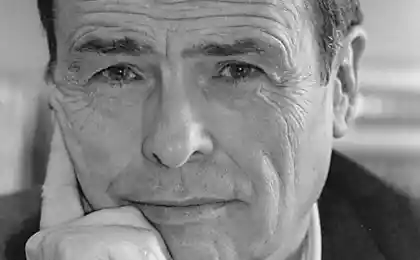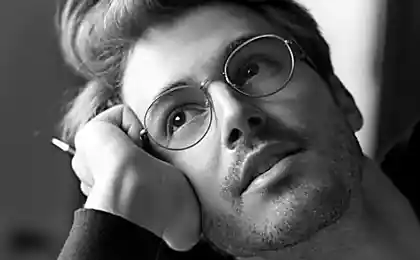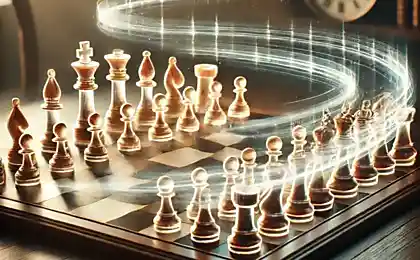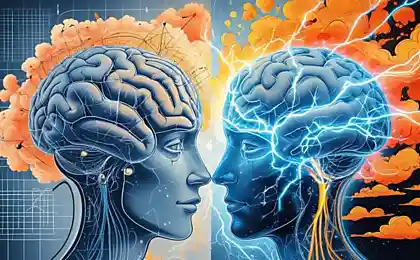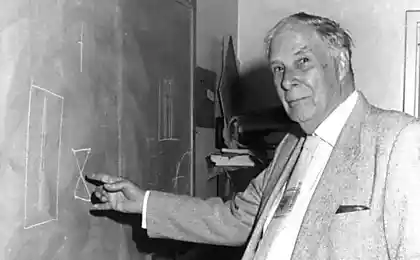222
7 Questions: Techniques That Will Help You Make a Difficult Decision

Decision-making is not always easy. This requires a balanced approach and analysis of the situation, sometimes deep personal reflection. In everyday matters, we usually cope with the machine: what product to buy, what route to get to work, etc. But there are times when we are faced with a really difficult dilemma: quit or stay at work, move to another city or try to settle down where we already live, take responsibility for a new project or maintain the usual stability.
In such cases, the usual pros and cons may not be enough. We want to look at the problem from a broader perspective, ask ourselves the right questions to understand our true motivations, values, fears and possible benefits. For this purpose, psychologists and coaches have developed many techniques to help structure thinking and approach the decision from different angles.
One of these techniques is the “7 Questions”, which allows you to gather together all the important information and say (or prescribe) your feelings and arguments systematically. This article will explain exactly how this approach works and why it can be very effective for you. The material is addressed to a wide audience who want to learn how to make informed decisions in situations where a simple “list of pros and cons” does not give a satisfactory result.
Main part
What does a structured approach to decision make?
Many people act by intuition. Sometimes it really works, especially if you have a well-developed sixth sense. But in tense, ambiguous situations, where you don’t have a clear “right” option, or when there is a serious risk at stake, it’s worth taking the time to fully analyze.
According to the American Psychological Association, a systematic analysis of the situation reduces anxiety and helps you feel more confident in your choice. This is especially helpful if you are perfectionistic or afraid of making a mistake. Structured questions lead to a deeper understanding of your own motives: why you want (or do not want) a certain outcome, what possible scenarios you see and what you are willing to sacrifice to achieve the desired result.

The essence of “7 questions”
The 7 Questions technique was born out of the coaching approach, where the main goal is to help the client look at the problem in a comprehensive way. This method is universal, does not require special training and can be used independently, without the help of a coach or psychologist. The principle is simple: we consistently ask ourselves seven key questions, answering each as honestly and fully as possible. The result is a clearer picture, which allows you to make a decision with less doubt.
Let’s look at these questions in more detail:
1. "What do I want to achieve in the end?"
Every action or choice must have a purpose. Formulate what you want: a new job, saving relationships, improving your financial situation, moving? People often get confused because they don’t know what their goal is. If you can’t tell what the result is for you, stop here and take the time to clarify it.
- Clarity of purpose: Describe the outcome in specific terms (e.g., “finding a job that provides a stable income and career opportunity” rather than simply “wanting to leave my previous job”).
- Measurement: Ask yourself how you will know that your goal has been achieved (income threshold, satisfaction level, quality of life?).
2. "Why is this important to me?"
Often, deep down, we want not so much the result in itself as the sensation it gives. Sometimes it’s social pressure or stereotypes, and sometimes it’s a genuine desire for development. Understanding the “why” provides additional motivation and helps to separate the real causes from those imposed from the outside.
- Remember the values: If your goal aligns with your values (freedom, security, creativity), you will feel a surge of enthusiasm.
- Avoid other people's scenarios: Perhaps you want to achieve something because it’s “accepted” or that’s what relatives want? Find out if this is really your personal desire.
3. "What options do I have?"
Every decision is a choice between alternatives. List all the real options, even if they seem “not perfect” at first. Practice shows that we often see only “black” and “white”, missing a whole range of intermediate solutions.
- Free brainstorming: Just write down whatever comes to mind without internal censorship.
- Pluralism: Consider the option of cooperation, compromises, postponements, temporary decisions.
4. “What are the pros and cons of each option?”
This question is often reminiscent of the classic pros and cons exercise. But now that you have multiple options, it’s important to analyze each in detail. This analysis allows you to see the obvious and hidden consequences.
- Evaluate the short-term and long-term effects: Sometimes the solution can be beneficial in the coming months, but lead to complications in the future.
- Consider the feelings: Rational weighing is great, but do not forget about your emotional comfort. Are you willing to live with what you have to sacrifice for a choice?

5. “How will I feel when I make a decision? ?
This question brings analysis to an emotional level. Sometimes we subconsciously already know which choice will be closer to our heart, but we are afraid to admit it. Imagine that the decision has already been made. What do you feel - joy, relief, anxiety, guilt?
- Imagine different scenarios: Take a few minutes to “think” each option.
- Listen to the body: Notice if there is tension or spasm when you think about a particular outcome. This may indicate that in your heart you are against it.
6. “What happens if I don’t make a decision and leave it as it is?”
Sometimes not making a choice is also a choice. Moving with the flow can temporarily relieve us of responsibility, but it often leads to things getting worse or other people making decisions without regard for our interests.
Analyze the risks associated with “no solution” or “procrastination.” Find out if you can continue to live in your current state without taking any action. Once you understand what this entails, you can either accept the status quo consciously or realize that delay is too expensive.
7. “What resources do I need and what am I willing to do? ?
The final question concerns the practical side of the case. Even after you have made a choice, the question arises: what is necessary to implement it? Money, time, support, new skills? Are you ready to invest?
- Resources: Material (finance, tools), emotional (confidence, enthusiasm), social (help of friends, mentors).
- Steps: Write down clearly what actions need to be taken in the coming weeks or months to make the decision a reality.
- Monitoring and adjustment: Keep in mind that the world is changing and your plan can change too. The main thing is to start moving.
Conclusion
The 7 Questions technique is not a magic pill that removes all doubts at once. However, it allows you to approach a complex decision more comprehensively and clearly, sorting your worries, desires and fears into clear categories. When you go through all the stages of understanding, from understanding your true purpose to identifying specific steps and resources, the stress of ignorance decreases. Instead of disparate thoughts, a coherent strategy is formed in the head.
Thus, we can say that the main secret of decision-making is a combination of logical analysis, emotional sensitivity to oneself and understanding of possible consequences. Difficult choices, whether career, personal, or moral dilemmas, are inherently risky and uncertain. But a structured approach helps to organize chaos and, at a minimum, be prepared for different scenarios. And when you feel that you have done everything possible to adequately assess the situation, there is inner peace and confidence that you are in control of your life, and not floating through the waves of circumstances.
Ultimately, each of us is the author of our own destiny, and the ability to make decisions is one of the main tools in this creative process. Try the 7 Questions method the next time you’re faced with a difficult choice, and it may be the pillar you lacked to take a decisive step forward.

